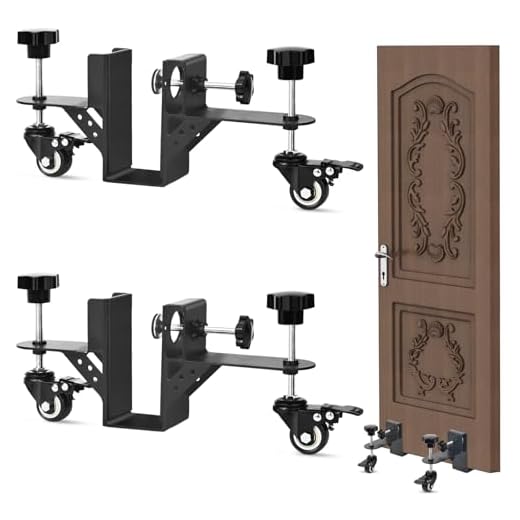




Chiseling out a door strike plate may seem like a daunting task, but with the right tools and techniques, it can be easily accomplished. The strike plate is an important component of a door’s lockset, as it provides a secure and sturdy connection between the door and the door jamb. Over time, the strike plate may become worn out or misaligned, resulting in a poor fit and compromised security. Chiseling out the door strike plate allows for proper installation of a new or adjusted plate, ensuring that your door locks smoothly and effectively.
Before you begin, gather the necessary tools: a chisel, a hammer, a screwdriver, and a measuring tape. You may also want to have a pencil and a door strike plate template handy for reference. Start by removing the old strike plate using a screwdriver. Next, measure the width and height of the new strike plate, as well as the distance from the edge of the door to the center of the hole for the lockset. Transfer these measurements onto the door using a pencil, making sure to mark the center point accurately.
Once you have marked the dimensions, use a chisel to carefully remove the wood within the marked area. Begin by making a series of shallow cuts along the perimeter of the strike plate outline, using the edge of the chisel. Then, use the hammer to gently tap the chisel, gradually removing small pieces of wood while staying within the outline. Take your time and work slowly, ensuring that the depth of the chisel cuts matches the thickness of the strike plate.
As you approach the final depth, switch to a smaller chisel or use the edge of the larger chisel to create a clean, flat bottom surface for the strike plate to rest on. It’s important to remove the wood to the depth specified by the thickness of the strike plate, as this will ensure a flush and secure fit. Test the fit of the strike plate periodically during the chiseling process, adjusting as necessary to achieve a snug fit. Once the strike plate fits securely, use screws to fasten it in place, making sure it is aligned properly with the latch mechanism.
By following these steps, you can successfully chisel out a door strike plate and achieve a proper fit for your door lockset. Remember to work carefully and patiently, taking the time to measure accurately and remove the wood incrementally. With a little practice and attention to detail, you can improve the security and functionality of your door’s lockset.
Importance of Door Strike Plate
One often overlooks the importance of a door strike plate, but it plays a crucial role in ensuring the security of your home. A door strike plate is a metal plate that is installed on the door jamb, and it provides a secure place for the door latch or deadbolt to engage when the door is closed.
Enhanced Security
One of the key reasons why a door strike plate is important is that it enhances the security of your door. When a door strike plate is properly installed and reinforced, it can help prevent forced entry and unauthorized access to your home. It acts as a barrier, making it difficult for intruders to kick or force the door open.
Additionally, a high-quality strike plate combined with a sturdy deadbolt can deter burglars and make your home a less attractive target. By investing in a durable strike plate, you can significantly enhance the overall security of your door, providing you with peace of mind.
Longevity of Your Door
Another important aspect of a door strike plate is its ability to enhance the longevity of your door. Door latches and deadbolts exert pressure on the strike plate every time the door is closed. Without a properly installed and reinforced strike plate, the door jamb can become damaged over time. This can lead to misalignment of the door, making it difficult to close or causing drafts and security issues.
By installing a high-quality strike plate, you can distribute the force exerted by the latch or deadbolt over a larger area of the door jamb, reducing the risk of damage. This can help prolong the life of your door, saving you money on costly repairs or replacements.
Considerations when Choosing a Door Strike Plate
When choosing a door strike plate, there are a few important factors to consider. Firstly, opt for a strike plate made of durable materials such as stainless steel or brass. These materials are more resistant to wear and offer better security and longevity.
Additionally, consider the size and shape of the strike plate. Ensure that it is compatible with your specific door latch or deadbolt, and that it provides enough clearance for smooth operation. Taking measurements and consulting with a knowledgeable professional can help you select the right strike plate for your door.
| Benefits of a Door Strike Plate |
|---|
| Enhances security |
| Prevents forced entry |
| Protects door from damage |
| Prolongs door’s lifespan |
| Deters burglars |
Tools required for chiseling Door Strike Plate
When chiseling out a door strike plate, you will need a few essential tools to ensure a clean and precise finish. These tools include:
| Tool | Description |
|---|---|
| Chisel | A sharp woodworking tool with a flat, beveled edge used for cutting and shaping wood. |
| Hammer | A tool used for striking the chisel to make clean and accurate cuts. |
| Screwdriver | A tool used for removing screws from the door strike plate before chiseling. |
| Tape measure | A measuring tool used to ensure precise placement of the strike plate. |
| Pencil | Used for marking the areas where the strike plate needs to be chiseled. |
| Chisel hammer | A specialized hammer with a small, rounded face that is designed to be used with a chisel. |
| Router | An advanced tool that can be used for chiseling out the strike plate recess with more precision. |
Having these tools on hand will make the process of chiseling out a door strike plate much easier and ensure a professional-looking result.
Preparation before chiseling Door Strike Plate
Before you start chiseling the door strike plate, it is important to properly prepare the area and gather the necessary tools. Taking these steps will ensure a smooth and successful chiseling process:
1. Gather the Required Tools
Make sure you have all the necessary tools before you begin. These tools include a chisel, a hammer, a drill, a screwdriver, a painter’s tape, and a pencil. Double-check that you have the correct sizes and types of tools for your specific door strike plate.
2. Remove the Door from the Hinges
To make the chiseling process easier and more accessible, it is recommended to remove the door from its hinges. Use the screwdriver to remove the hinges and carefully lift the door off its frame. Place the door on a sturdy work surface, such as a workbench or sawhorses, ensuring that it is stable and secure.
3. Mark the Chiseling Area
Take measurements and mark the exact area where you plan to chisel the door strike plate. This will help you create a clean and precise cut. Use a pencil and a carpenter’s square to make straight and accurate lines. You can also use painter’s tape to create a temporary guide for the chiseling area.
4. Protect the Surrounding Areas
Before you start chiseling, protect the surrounding areas of the door to avoid any accidental damage or scratches. You can use painter’s tape or masking tape to cover the area around the strike plate and the door frame. Additionally, place a cloth or plastic sheet underneath the door to catch any wood chips or debris.
By following these preparation steps, you can ensure that you are ready to chisel the door strike plate accurately and efficiently. This will result in a neat and professional-looking installation of the strike plate, improving the overall functionality and security of your door.
Steps to Chisel Out Door Strike Plate
Chiseling out a door strike plate is a fairly simple process. Follow these steps to make sure you do it correctly:
- Remove the door strike plate using a screwdriver to unscrew the screws. Place the screws aside.
- Measure the depth of the door strike plate using a tape measure or ruler. This will help you determine how far to chisel.
- Position the chisel at the edge of the strike plate. Make sure the beveled edge of the chisel is facing the strike plate.
- Gently hammer the chisel into the wood, creating a small groove. This will serve as a guide for chiseling out the rest of the strike plate area.
- Continue chiseling along the outline of the strike plate, gradually removing wood until the strike plate fits flush with the door frame. Be careful not to chisel too deeply, as this may cause damage to the door and frame.
- Check the fit of the strike plate occasionally by placing it back on the chiseled area. Make any necessary adjustments by chiseling away more wood until the strike plate fits securely and snugly.
- Once the strike plate fits properly, screw it back into place using the screws that were set aside earlier. Make sure the screws are tight to ensure a secure fit.
- Test the door latch by closing the door and checking that it engages with the strike plate properly. Make any additional adjustments if necessary.
- Finally, sand down any rough or uneven areas around the chiseled out strike plate to ensure a smooth finish.
Following these steps will help you successfully chisel out a door strike plate and ensure that your door closes properly and securely.
Tips for Chiseling Out Door Strike Plate
Chiseling out a door strike plate can be a tricky process, but with the right tools and techniques, it can be done effectively. Here are some tips to help you chisel out a door strike plate:
| Tip | Description |
| 1 | Use a sharp chisel |
| 2 | Score the outline |
| 3 | Make shallow cuts |
| 4 | Remove small increments |
| 5 | Check the fit frequently |
| 6 | Sand the edges |
First and foremost, make sure you are using a sharp chisel. A dull chisel can make the process more difficult and can lead to splintering. It is also important to score the outline of the strike plate with a utility knife or chisel before making any cuts. This will help guide your chisel and prevent any unnecessary damage to the door.
When chiseling out the strike plate, make shallow cuts and remove small increments of wood at a time. This will give you more control over the depth and allow you to make precise adjustments as needed. It is also a good idea to check the fit of the strike plate frequently to ensure that it is lining up correctly with the latch. This will save you time and effort in the long run.
Finally, once the strike plate is chiseled out, take the time to sand the edges to ensure a smooth and clean finish. This will prevent any snagging or scraping when the door is opened or closed. Overall, chiseling out a door strike plate requires patience and attention to detail, but with these tips, you can achieve professional results.









